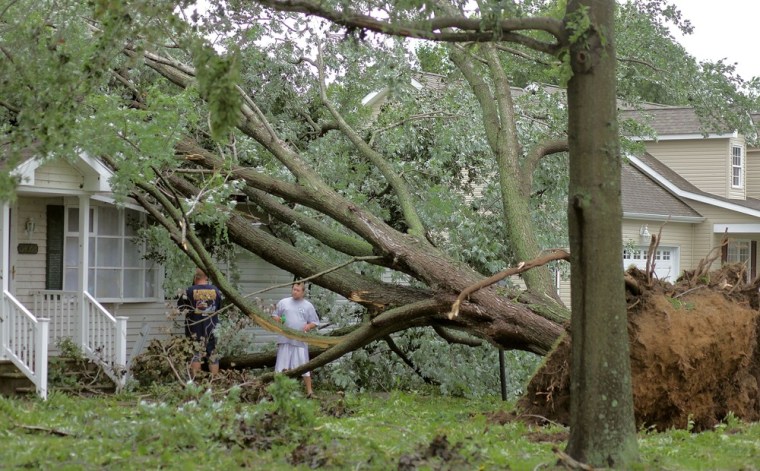Hurricane Irene didn't turn out to be the $15 billion disaster experts predicted, but it's still a financial headache for home and business owners along the Eastern Seaboard.
Catastrophe analysis firm Kinetic Analysis Corp. offered an initial damage estimate of $7 billion, with the possibility of an extra $1 billion in damages if flooding in the Northeast is severe. The silver lining for these battered local and regional economies is that the storm could provide an employment bump for the beleaguered construction industry.
The initial impact is likely to be an increase in jobless claims for construction workers, reflecting the suspension or postponement of projects in anticipation of Irene's arrival and the disruption of services that keeps workers at home for a short window after the storm, according to Carl Van Horn, professor of public policy and director of the John J. Heldrich Center for Workforce Development at Rutgers University.
"A few weeks later, employment picks up as people rebuild," he said.
Two professors at the University of Southern Mississippi who studied the impact on construction employment in parts of the Gulf Coast after Hurricane Katrina in 2005 found an initial increase of about 50 percent, with a longer-term boost that lasted two-and-a-half years.
Edward Sayre, associate professor of economics and one of the study's authors, says the impact from Irene won't be as dramatic both because it's a much smaller storm and because there's less demand for construction work overall right now.
"Now, there's a fair amount of excess labor that can be mobilized," he said. This means a quicker return to normal for people and businesses, but it means that the window of growth will be shorter.
Van Horn at Rutgers said the bigger effect is when you lose a bridge or a major roadway.
"It'll take millions to fix, so that will boost the construction industry over the next several months, maybe a couple of years," he said. However, this isn't going to help the nationwide plight of underemployed construction workers; even large rebuilding projects only will impact local or smaller regional economies.
Sayre and co-author David Butler say regional economies may shift as businesses re-establish further inland.
"Counties that had near-misses generally saw fairly strong employment growth in the 12 to 18 months afterwards," said Sayre.
The wild card is how much of this damage is insured. Kinentic Analysis Corp. estimates less than $3 billion in insured losses. In a statement, disaster-modeling company RMS pointed out that "rainfall driven inland flooding is a major concern due to the large size, slow moving characteristics and heavy rainfall associated with Hurricane Irene," especially in the Northeast.
If flooding is concentrated in areas not normally prone to it, it's unlikely that homes and businesses would have flood insurance. If people have to pay for repairs themselves, it drags down their net worth and put a brake on consumer spending, noted Karl Smith, associate professor of economics and government at the University of North Carolina at Chapel Hill.
Unlike other disasters, it's unrealistic to count on FEMA to ride to the rescue, according to Eileen Appelbaum, senior economist at the Center for Economic and Policy Research.
Today, the agency has less than $1 billion in funds, and it's likely that political wrangling would ensue before any additional money was made available for rebuilding. Rebuilding efforts and the job growth they entail could also be stalled if insurance companies are slow in paying out claims or dispute large numbers of them as they did following the strong 2005 hurricane season.
